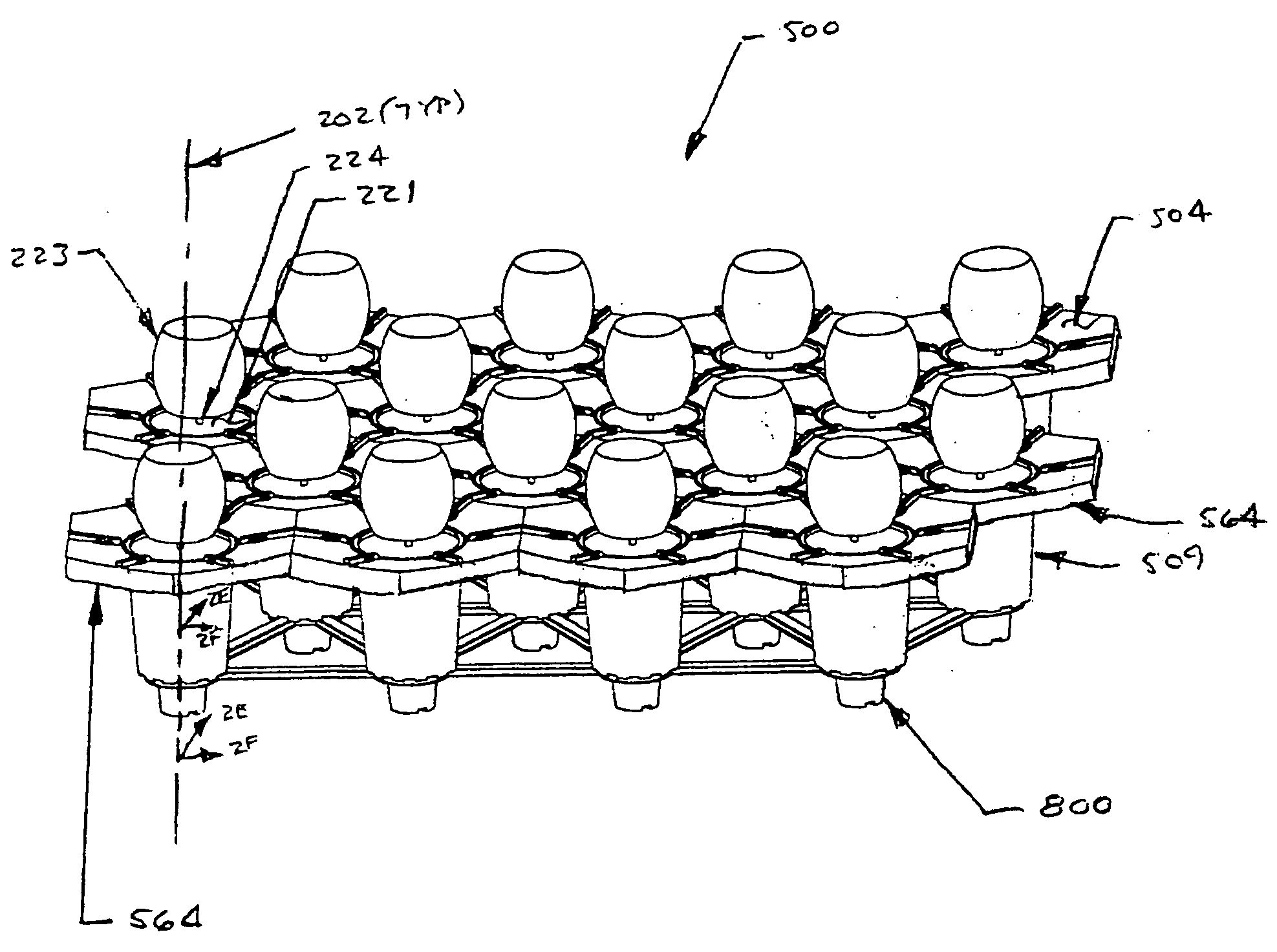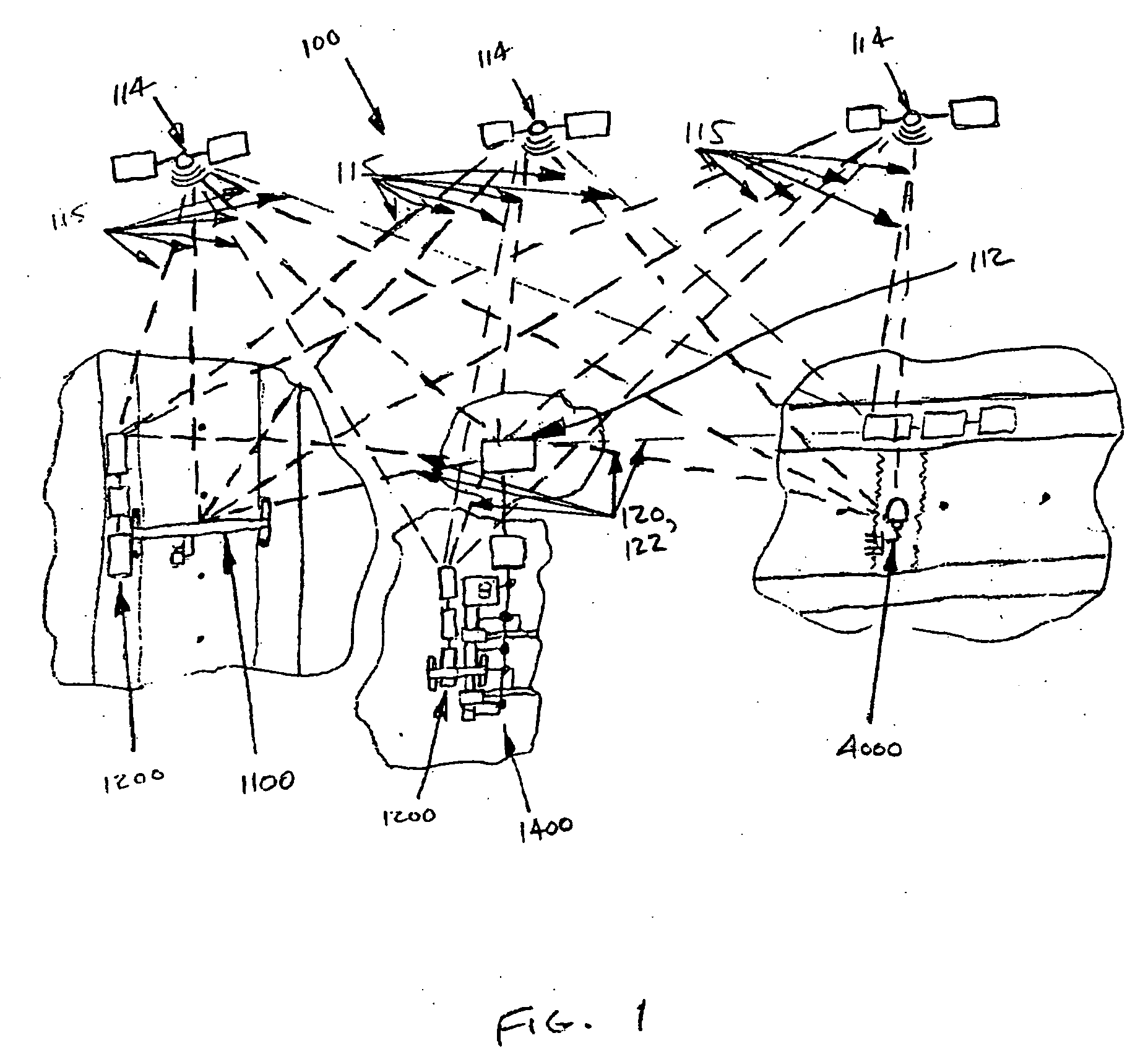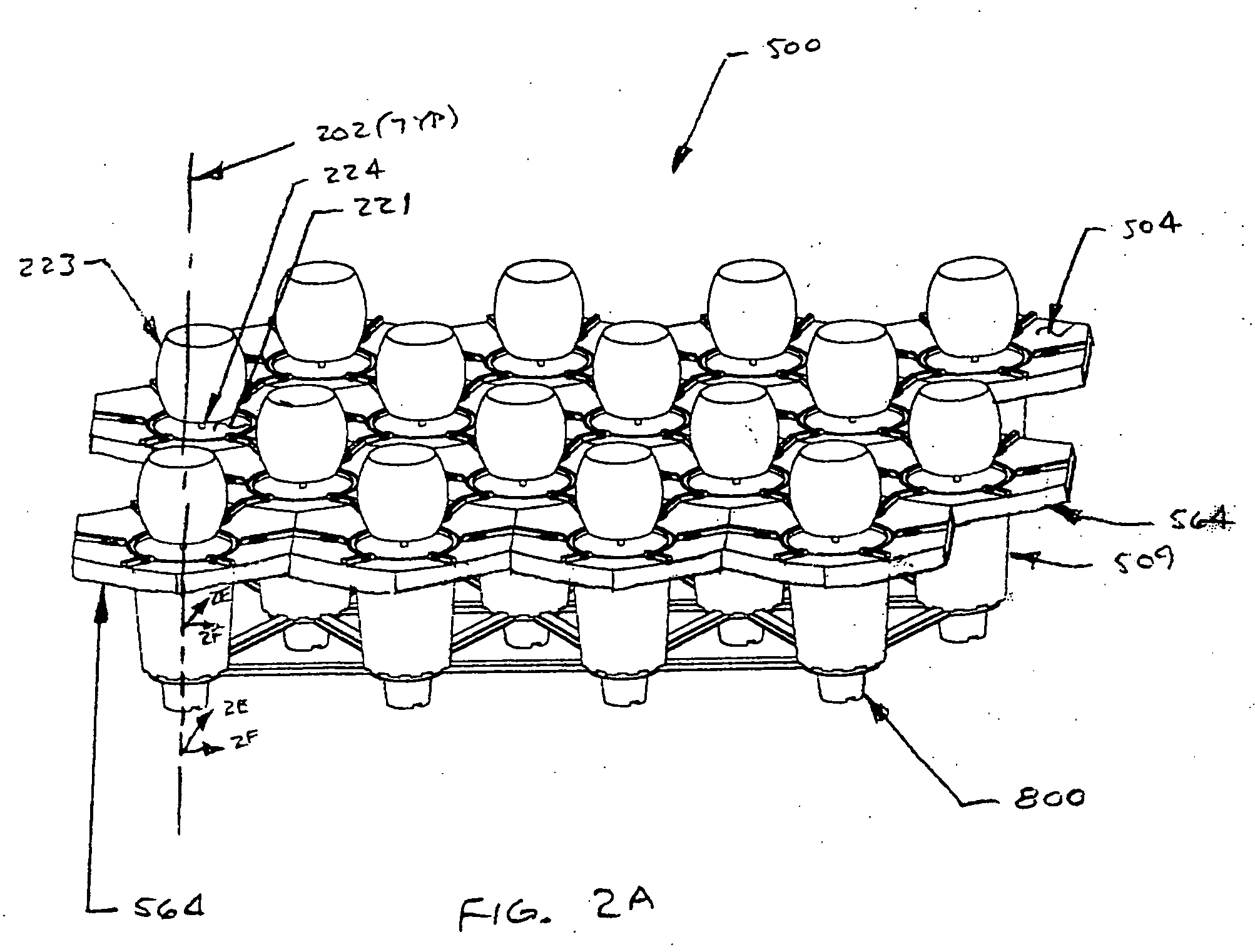Apparatuses and systems for growing nursery stock
a technology for nursery stock and apparatus, applied in the field of apparatus and systems for growing nursery stock, can solve the problems of reduced labor content, increased labor difficulty, and increased labor burden, and achieve the effects of improving stability, facilitating container handling stability, and improving water retention
- Summary
- Abstract
- Description
- Claims
- Application Information
AI Technical Summary
Benefits of technology
Problems solved by technology
Method used
Image
Examples
embodiment 1
CGU / CGAA Embodiment 1
[0387] In PAU having first embodiment of CGU / CGAA arrangement (FIGS. 55-56), CGAA 2300 corresponding to pallet 502 configuration to be processed is retrieved and installed, as described above.
CGU / CGAA Embodiment 2
[0388] In PAU having second embodiment of CGU / CGAA arrangement (FIGS. 70-72C), CGAA 2780 / 2790 corresponding to pallet 502 configuration to be processed is retrieved and installed, similarly to process for first embodiment.
CGU / CGAA Embodiment 3
[0389] In PAU having third embodiment of CGU / CGAA arrangement (FIGS. 73A-D), CGAA 2920 / 2940 gripper tines are positioned corresponding to pallet 502 configuration to be processed.
Common
[0390] Also, prior to start of production, CLU conveyor elements 2450 are positioned typically to align with predefined lateral positions of centers of pallet container receptacles 509 across PAIDOC 2105 prior to start of production run. For larger containers, CLU conveyor elements may be “doubled up” beneath each pallet recep...
pas embodiment 1
Operation
[0461] PAS 2000 can operate in following modes: open loop, container closed-loop, and pallet assembly (PA) closed-loop. These modes are achieved through recipe-driven, microprocessor-based control, substantial integration of controls and process and the ability of most PAS 2000 components to operate reversibly.
[0462] Open-loop mode is characterized by generally single-direction movement of containerized plants through PAS 2000, and can have following variations: ‘serial-in’, ‘serial-out’, ‘serial-in / out’, ‘parallel-in’, and ‘parallel-out’.
[0463]‘Serial-in’ mode comprises: conveying of individual containerized plants or trays / flats of plants from a location outside the nursery internal growing areas—typically the nursery's shipping / receiving area—to one PAU 2100(2), along with conveying of pallets, and, if applicable, grids, from PGSU 4500(2) which singulated pallets from stacks drawn from PGSA 3500, through PGSE 4510(2); installation by PAU 2100(2) of associated container...
pas embodiment 2
Pallet / Grid Removal From PAS
Pallet / Grid Removal from PAS
[0530] In each process involving removal of pallets and, if applicable, grids, from PAS 1500 and subsequent storage of such items starts with the presence of first and second pallets, 1894 and 1895, respectively, (similar to 302, 402, or 502) proximal to PGSU 1560 end 1893 of and spaced laterally on PC 1890. It may, depending on production configuration, also start with the presence of a first pair of grids 1896 and 1897 (similar to 600) beneath respective pallets 1894 and 1895 and a second pair of grids 1896′ and 1897′ between respective pallets 1894 and 1895 and PGSU 1560 end 1893 of PC 1890. Such process comprises sequentially: engaging and gripping a first pallet 1894 and, if applicable, a first grid 1896′, as applicable, on side of grid longitudinal center vertical plane distal to PGSC's 1508 and 1509, transferring first pallet 1894 and grid 1896′ to and nesting them on tops of second pallet 1895 and grid 1897′, respecti...
PUM
 Login to View More
Login to View More Abstract
Description
Claims
Application Information
 Login to View More
Login to View More - R&D
- Intellectual Property
- Life Sciences
- Materials
- Tech Scout
- Unparalleled Data Quality
- Higher Quality Content
- 60% Fewer Hallucinations
Browse by: Latest US Patents, China's latest patents, Technical Efficacy Thesaurus, Application Domain, Technology Topic, Popular Technical Reports.
© 2025 PatSnap. All rights reserved.Legal|Privacy policy|Modern Slavery Act Transparency Statement|Sitemap|About US| Contact US: help@patsnap.com



